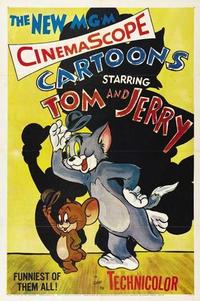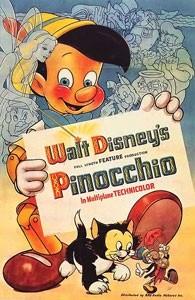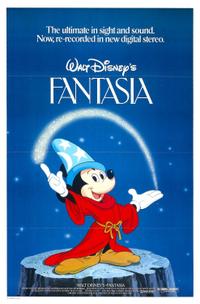
161话 / 1940-02-10 / William Hanna (1940–58)→Joseph Barbera (1940–58)→Gene Deitch (1961–62) Chuck Jones (1963–67)、Maurice Noble (1964–67)、Abe Levitow (1965–67)、Tom Ray (1966–67)、Ben Washam (1966–67)
9.1(11990人评分)
简介: Tom and Jerry is an American animated series of short films created in 1940 by William Hanna and Joseph Barbera. It centers on a rivalry between its two main characters, Tom Cat and Jerry Mouse, and many recurring characters, based around slapstick comedy. In its original run, Hanna and Barbera produced 114 Tom and Jerry shorts for Metro-Goldwyn-Mayer from 1940 to 1957. During this time, they won seven Academy Awards for Animated Short Film, tying for first place with Walt Disney's Silly Symphonies with the most awards in the category. After the MGM cartoon studio closed in 1957, MGM revived the series with Gene Deitch directing an additional 13 Tom and Jerry shorts for Rembrandt Films from 1960 to 1962. Tom and Jerry then became the highest-grossing animated short film series of that time, overtaking Looney Tunes. Chuck Jones then produced another 34 shorts with Sib-Tower 12 Productions between 1963 and 1967. Two more shorts were produced, The Mansion Cat in 2001 and The Karate Guard in 2005, for a total of 163 shorts. Various shorts have been released for home media since the 1990s. A number of spin-offs have been made, including the television series The Tom and Jerry Show (1975–77), The Tom and Jerry Comedy Show (1980–82), Tom & Jerry Kids (1990–94), Tom and Jerry Tales (2006–08), and The Tom and Jerry Show (2014-present). The first feature-length film based on the series, Tom and Jerry: The Movie, was released in 1992 before ten direct-to-video films were produced between 2002 and 2013. Numerous Tom and Jerry shorts have been subject to controversy, mainly over racial stereotypes which involves the portrayal of the recurring black character Mammy Two Shoes and characters appearing in blackface. Other controversial themes include cannibalism and the glamorization of smoking.

木偶奇遇记Pinocchio
木偶奇遇记
1话 / 1940-02-07 / Ben Sharpsteen、Hamilton Luske / The Adventures of Pinocchio
7(325人评分)
简介: After singing the film's signature song "When You Wish upon a Star", Jiminy Cricket explains to the audience that he is going to tell a story of a wish coming true. In flashback, he moves into the workshop of the woodworker Geppetto to warm himself from the cold. Jiminy watches as Geppetto finishes work on a wooden marionette which he dubs Pinocchio. Before falling asleep, Geppetto makes a wish on a star that Pinocchio could be a real boy. During the night, the star, in the form of a Blue Fairy, visits the workshop to grant Geppetto's wish. She makes Pinocchio come alive, while remaining still a puppet. The fairy tells Pinocchio that if he wants to become a real boy of flesh and blood he must prove himself to be brave, truthful and unselfish and able to tell right from wrong by listening to his conscience. Pinocchio does not understand what a conscience is, and Jiminy appears to explain it to him. The Blue Fairy asks if Jiminy would serve as Pinocchio's conscience, a task he accepts. Geppetto discovers that his wish has come true, and is filled with joy. The next day, he sends Pinocchio on his first day of school. However, the naive Pinocchio is led astray by the conniving con artists Honest John and Gideon, who convince him to join Stromboli's puppet show instead. Pinocchio becomes Stromboli's star attraction, but when Pinocchio offers to come back in the morning, Stromboli locks Pinocchio in a birdcage to prevent him from leaving. With the help of the Blue Fairy and Jiminy, Pinocchio escapes, vowing to do better from now on. Unfortunately, on his way back to Geppetto's house, Pinocchio is once again led astray by Honest John and Gideon, who convince him that he is sick, and the only cure is to go to Pleasure Island. On his way he befriends Lampwick, a misbehaved and destructive boy. Soon Pinocchio and the other boys begin to enjoy gambling, smoking, getting drunk and destroying Pleasure Island, much to Jiminy's dismay. Then Jiminy discovers the island harbours a terrible curse which turns boys who "make jackasses of themselves" into real donkeys, who are then sold to work in the salt mines and circuses as part of an evil racket run by The Coachman. Lampwick is soon transformed into a donkey, but Pinocchio manages to escape with only a donkey's ears and tail. Upon returning home, they find the workshop empty and soon learn (from a letter by the Blue Fairy) that Geppetto, while venturing out to sea to rescue Pinocchio from Pleasure Island, had been swallowed, along with Figaro and Cleo, by a giant whale named Monstro. Determined to rescue his father, Pinocchio jumps into the bottom of the ocean, with Jiminy accompanying him. However, Pinocchio is soon found and eaten by Monstro, where he is reunited with Geppetto and his pets inside the whale. Pinocchio devises an escape plan by burning wood in order to make Monstro sneeze. The plan works, but the enraged whale gives chase. Eventually, Pinocchio succeeds in getting Geppetto to safety in a cave under a cliff before Monstro rams into it. After Monstro's defeat, Jiminy discovers that Pinocchio has been killed. At their home, the group mourn Pinocchio, but from afar, the Blue Fairy decides Pinocchio has proven himself, and he is reborn as a real human boy, much to the euphoria of his family.

幻想曲Fantasia
幻想曲
1话 / 1940-11-13 / James Algar、Samuel Armstrong、Ford Beebe、Norman Ferguson、Jim Handley、T. Hee、Wilfred Jackson、Hamilton Luske、Bill Roberts、Paul Satterfield
7.6(245人评分)
简介: 《幻想曲》是迪士尼的一部重要的艺术作品,曾经获得奥斯卡最佳杰出贡献特别奖。同时以“幻想曲”命名的还有鸡尾酒,音乐作品和作文集等。 幻想曲是一部非常独特的动画影片,它是影坛首次尝试将音乐和美术所作的一次伟大的结合,以美术来诠译音乐。沃特·迪斯尼于1940年完成这部旷世巨作,50年来这部影片成为收藏家及儿童和大人们最喜爱的影片,它的艺术成就至今尚无任何一部音乐片可超越!本片获第14届奥斯卡特别成就(音乐和录音术)2项金像奖、纽约影评人协会特别奖。该片由八段不同曲目的音乐配上动画师根据音乐想象出的故事合成,曲目包括一众音乐大师的杰作,如巴赫的《托卡塔和D小调赋格曲》、柴可夫斯基的《胡桃夹子组曲》、斯特拉文斯基的《春之曲》、贝多芬的《田园交响曲》、蓬基耶利的《时间舞蹈》、穆索尔斯基的《荒山之夜》、舒伯特的《玛丽亚大街》以及最令人难忘的杜卡斯的《魔法师的学徒》。为创作斯特拉文斯基的'春之曲'段落,沃尔特·迪斯尼听取了古生物专家的意见,买来了一群蜥蜴和一只小鳄鱼,以便卡通画家们研究它们的动作。而恐龙的形象则被迪斯尼视为得意之作,它不仅出现在这部影片中,还被制成模型在1964年的世界博览会上展出,并被收进迪斯尼乐园。据说,恐龙的动作是模仿斯特拉文斯基指挥的动作设计出来的。 获得奥斯卡最佳音乐表现奖及最佳杰出贡献特别奖。